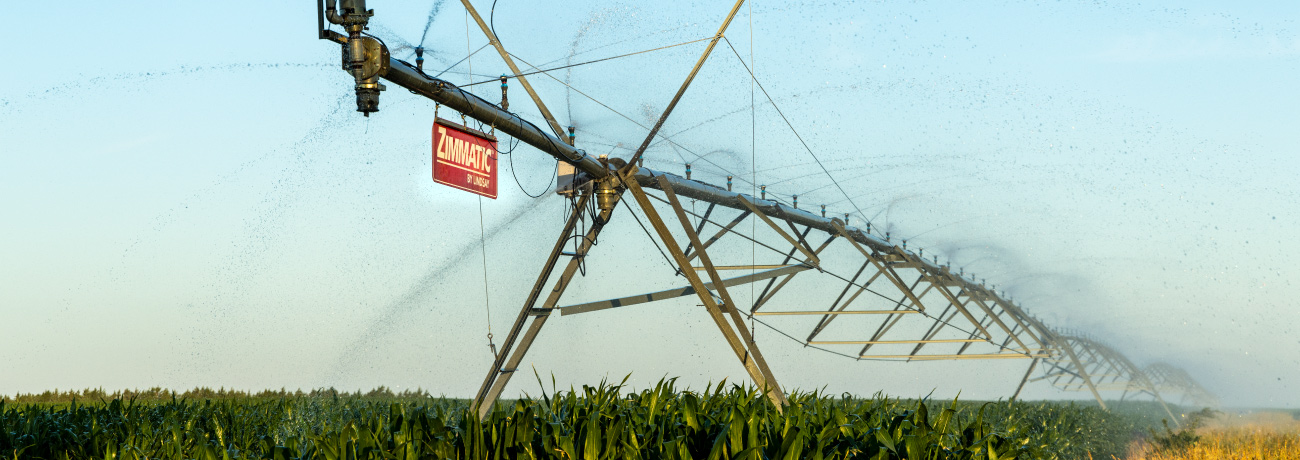Zimmatic Blog
Data Dos and Don'ts: Tips to Maximize Your End of Season Irrigation Data
Nov 8, 2022

For many growers, winter is a time for maintenance and, hopefully, rest. But it’s also a great time to review your farming practices, yield performance, soil health and even irrigation approach. After all, the more you reflect on and learn about your operation’s needs this season, the better you can make informed decisions for next season.
But what exactly does that process look like, and how can you maximize this season's irrigation data today?
Why it’s important to look at your data now
FieldNET™ is designed to give you the upper hand when it comes to getting the best results for your irrigation operation. From seeing yearly water application and available water graphs to yield maps and machine shutdowns, you get irrigation data and insights at your fingertips year-round.
While you may have been using that data during the growing season to monitor crop conditions and water needs or optimize irrigation schedules in real time, that data continues to be valuable after harvest.
In fact, it can tell you where there are opportunities to improve efficiencies and how well your irrigation system is working for you.
7 tips to get the most out of your irrigation data
When it comes to maximizing your irrigation data at the end of the season, there are a few things to keep in mind.
DO: Have specific goals in mind
Data is a powerful tool to leverage for making more informed decisions about your irrigation operation. It can help remove the guesswork and provide peace of mind during the season. The same can be said for the end of the season too.
If you’re asking yourself about problem areas, equipment needs or what to do differently next year—data can help you find the answers. However, it’s beneficial to have clear goals in mind for what you hope to achieve next season so you have a clear direction when looking at your data.
DON’T: Think you need to use all the data
While having data is a wonderful thing, it can also be overwhelming if you’re new to evaluating it all. This is where having specific goals, like noted above, can help.
If you’re using FieldNET, our global network of Zimmatic dealers is here to help you best navigate your data. They can help answer questions, walk you through the platform and provide tips on how to leverage your data.
DO: Use yield maps to identify problem areas
Your yield maps can be a valuable way to help identify issues with sprinklers on your pivot system. According to Aaron Sauser, sprinkler and VRI specialist at Lindsay Corporation, be sure to look for warning signs like spots or streaks when looking at your maps. They could be indicators of potential problems like plugged nuzzles, not enough sprinkler heads, worn regulators, inadequate water pressure and so on.
DON’T: Get discouraged by yield loss data
Check your forecasted yield loss with FieldNET if your irrigated field or fields have hard-to-reach areas. It can help estimate how much valuable yield you may be losing.
By understanding that potential loss, you can better plan for and prepare for next season. For example, you may look to add an expanded acreage solution like a corner arm, drop span or the FieldPLUS articulated pivot to extend your irrigation system’s reach.
DO: Take advantage of FieldNET features
FieldNET continues to be an industry leader when it comes to remote irrigation management technology. Just take FieldNET with WaterTrend℠, a new feature of FieldNET, which uses advanced data, science and modeling technology to provide a 7-day water trend of field-specific crop water needs.
You can also upgrade your subscription to add FieldNET Advisor™, which provides science-based irrigation recommendations to create efficient and effective irrigation plans. Together, FieldNET and FieldNET Advisor deliver powerful insights to monitor, analyze and manage your irrigation operation in one easy-to-use platform.
DON’T: Overlook cost-sharing incentives
If your data is identifying potential new equipment needs or precision tech, there are federal or state funding opportunities that can help. In fact, programs like the Environmental Quality Incentives Program (EQIP) from the U.S. Department of Agriculture’s Natural Resources Conservation Service can provide financial support for those looking to upgrade irrigation systems and implement better conservation practices.
DO: Connect all your precision tech
Finally, when it comes to precision farming technology, it can feel like every brand has its own app or platform. However, many brands are making strides to create new data connections. For example, FieldNET and the John Deere Operations Center are working together to help growers improve operational efficiency and performance by sharing crop and planting data between the two systems. This cross-platform sharing not only can help save growers time, but it can also improve the accuracy of recommendations.
When it comes time for you to look at your data, know that your local Zimmatic dealer is here for you. We know that every minute and every drop of water matters, and tools like FieldNET are here to help ensure you get the most out of your irrigation operation—and your season.